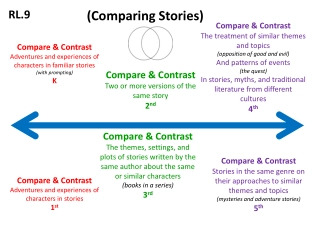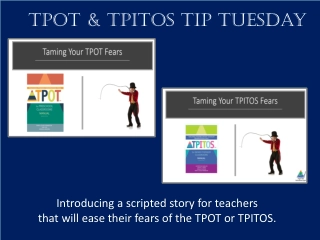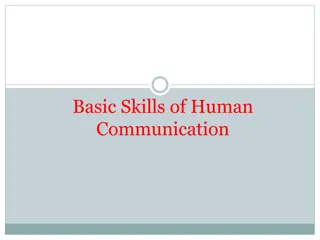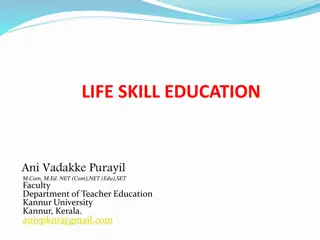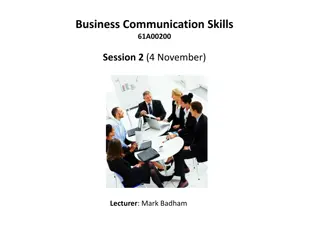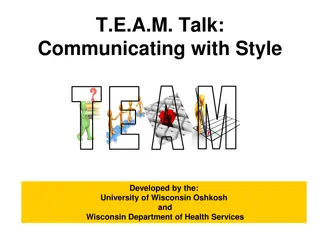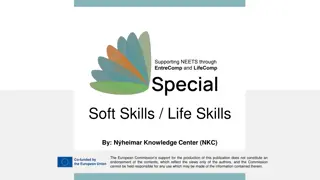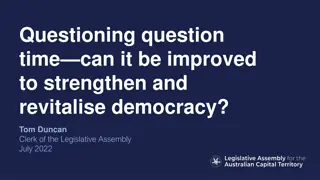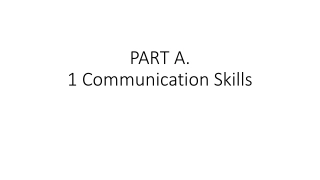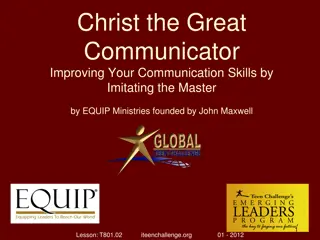Enhancing Communication Skills Through Scripted Stories
Explore tips and guidelines for scripted stories in social situations, using real photographs alongside line drawings. Learn how to create and utilize scripted stories effectively to support children with challenging behavior. Access valuable resources for developing communication skills through engaging narratives.
Download Presentation

Please find below an Image/Link to download the presentation.
The content on the website is provided AS IS for your information and personal use only. It may not be sold, licensed, or shared on other websites without obtaining consent from the author. Download presentation by click this link. If you encounter any issues during the download, it is possible that the publisher has removed the file from their server.
E N D
Presentation Transcript
I Can Use My Words Scripted Story Tips For tips and guidelines about Scripted Stories , please begin by reading Scripted Stories for Social Situations Tips located in the Visual Strategies folder on your CD. Please note that you can use real photographs with or instead of the line drawings for children that need this level of support. For instance, next to the line drawings, you can glue or Velcro a photograph of two children talking, the teacher talking to a child, a child who is upset, a child who is happy, etc. Assembly Directions: After printing on cardstock paper (or printer paper glued to a file folder for increased durability), bind the edge to form a book. If the child will use or handle the book, it might be helpful to laminate the pages prior to binding to increase durability. See next page(s) for printing directions . Lentini, R., Vaughn, B. J., & Fox, L. (2005). Teaching Tools for Young Children with Challenging Behavior. Tampa, Florida: University of South Florida, Early Intervention Positive Behavior Support.
PRINT DIRECTIONS FOR FULL SIZE BOOK Step 1: Click on File & select Print Step 2: Step 4: Select slides to print story Type 4-17 Type # of copies Step 3: Select slides Step 5: Click OK Lentini, R., Vaughn, B. J., & Fox, L. (2005). Teaching Tools for Young Children with Challenging Behavior. Tampa, Florida: University of South Florida, Early Intervention Positive Behavior Support.
PRINT DIRECTIONS FOR SMALL SIZE BOOK Step 1: Click on File & select Print Step 2: Step 5: Select slides to print story Type 4-17 Type # of copies Step 4: Step 3: Select 2 slides per page Change slides to handouts Step 6: Click OK Lentini, R., Vaughn, B. J., & Fox, L. (2005). Teaching Tools for Young Children with Challenging Behavior. Tampa, Florida: University of South Florida, Early Intervention Positive Behavior Support.
I Can Use My Words Can I have a turn? You took my piece. I don t like that! Created by Rochelle Lentini, USF Updated 2004 Lentini, R., Vaughn, B. J., & Fox, L. (2005). Teaching Tools for Young Children with Challenging Behavior. Tampa, Florida: University of South Florida, Early Intervention Positive Behavior Support.
I can use words with pictures, My turn. with written words, I need help. or by talking.
Can I play with you? When I use words with people, they can understand what I am saying.
Sometimes I want something I cant have, but it may be a choice later. After lunch when we come back outside. When can I use this? Can I have a turn? I can use my words and ask, When can I use this?
I can use words to tell people how I feel. I say, I am mad. I m mad! or I don t like that. I don t like that!
Say, I need help. Say, All done. My family and my teachers can help me remember to use words.
Help me please. Help me please. I can use words to ask for help. I can say, Help me please.
You took my piece. I don t like that! Can I play? Can I see too? People can understand me better if I use words.
People can have a hard time listening to me when I whine and scream.
When I whine, scream, or cry, people around me can get angry or upset.



